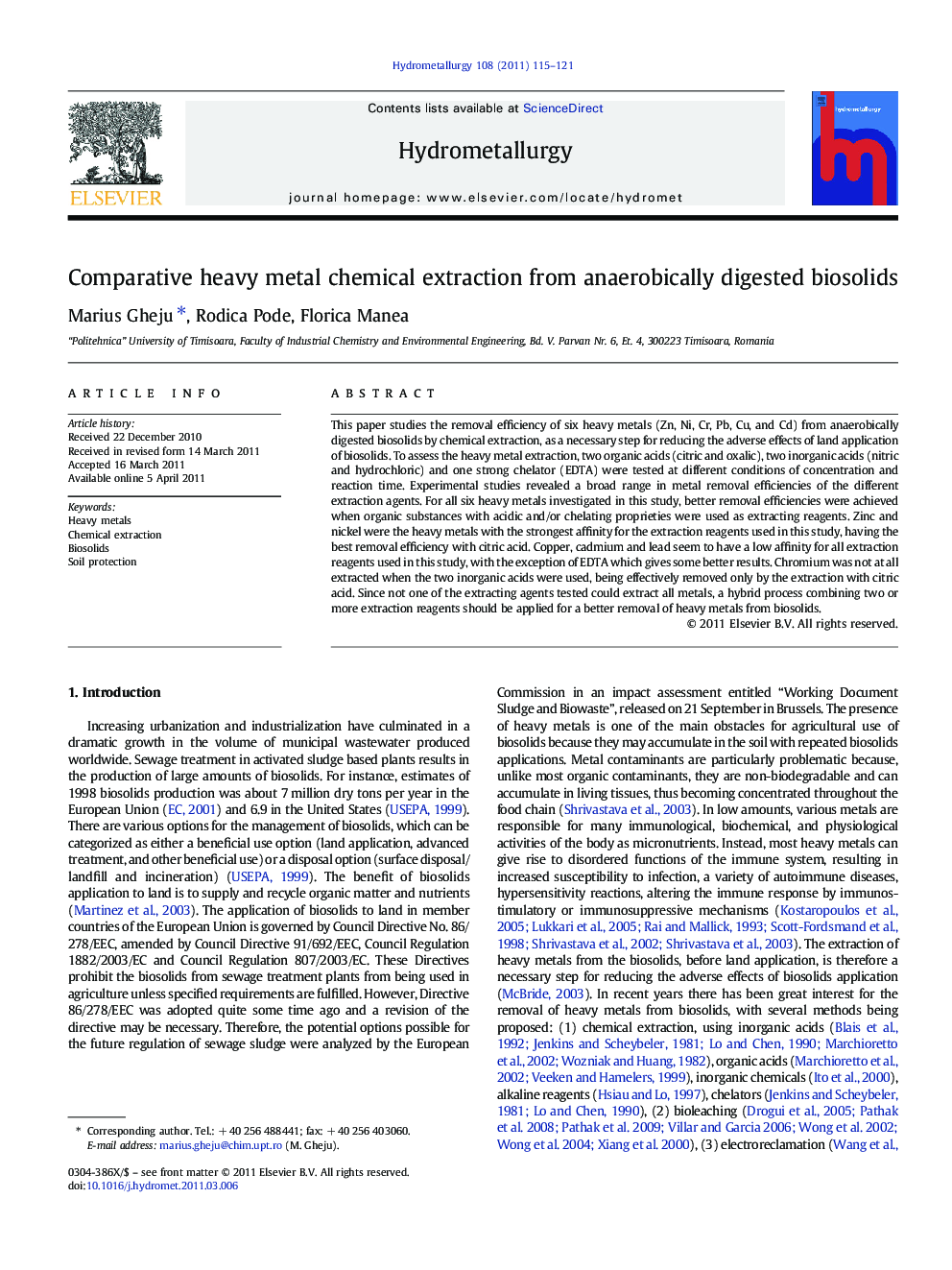| Article ID | Journal | Published Year | Pages | File Type |
|---|---|---|---|---|
| 212694 | Hydrometallurgy | 2011 | 7 Pages |
This paper studies the removal efficiency of six heavy metals (Zn, Ni, Cr, Pb, Cu, and Cd) from anaerobically digested biosolids by chemical extraction, as a necessary step for reducing the adverse effects of land application of biosolids. To assess the heavy metal extraction, two organic acids (citric and oxalic), two inorganic acids (nitric and hydrochloric) and one strong chelator (EDTA) were tested at different conditions of concentration and reaction time. Experimental studies revealed a broad range in metal removal efficiencies of the different extraction agents. For all six heavy metals investigated in this study, better removal efficiencies were achieved when organic substances with acidic and/or chelating proprieties were used as extracting reagents. Zinc and nickel were the heavy metals with the strongest affinity for the extraction reagents used in this study, having the best removal efficiency with citric acid. Copper, cadmium and lead seem to have a low affinity for all extraction reagents used in this study, with the exception of EDTA which gives some better results. Chromium was not at all extracted when the two inorganic acids were used, being effectively removed only by the extraction with citric acid. Since not one of the extracting agents tested could extract all metals, a hybrid process combining two or more extraction reagents should be applied for a better removal of heavy metals from biosolids.
Research highlights► Zn, Ni, Cr, Pb, Cu, and Cd were extracted from anaerobically digested biosolids. ► EDTA, citric, oxalic, nitric, and hydrochloric acids were used as extraction agents. ► Best removal efficiencies were achieved with organic reagents. ► A hybrid process should be applied for a better removal efficiency of heavy metals.
